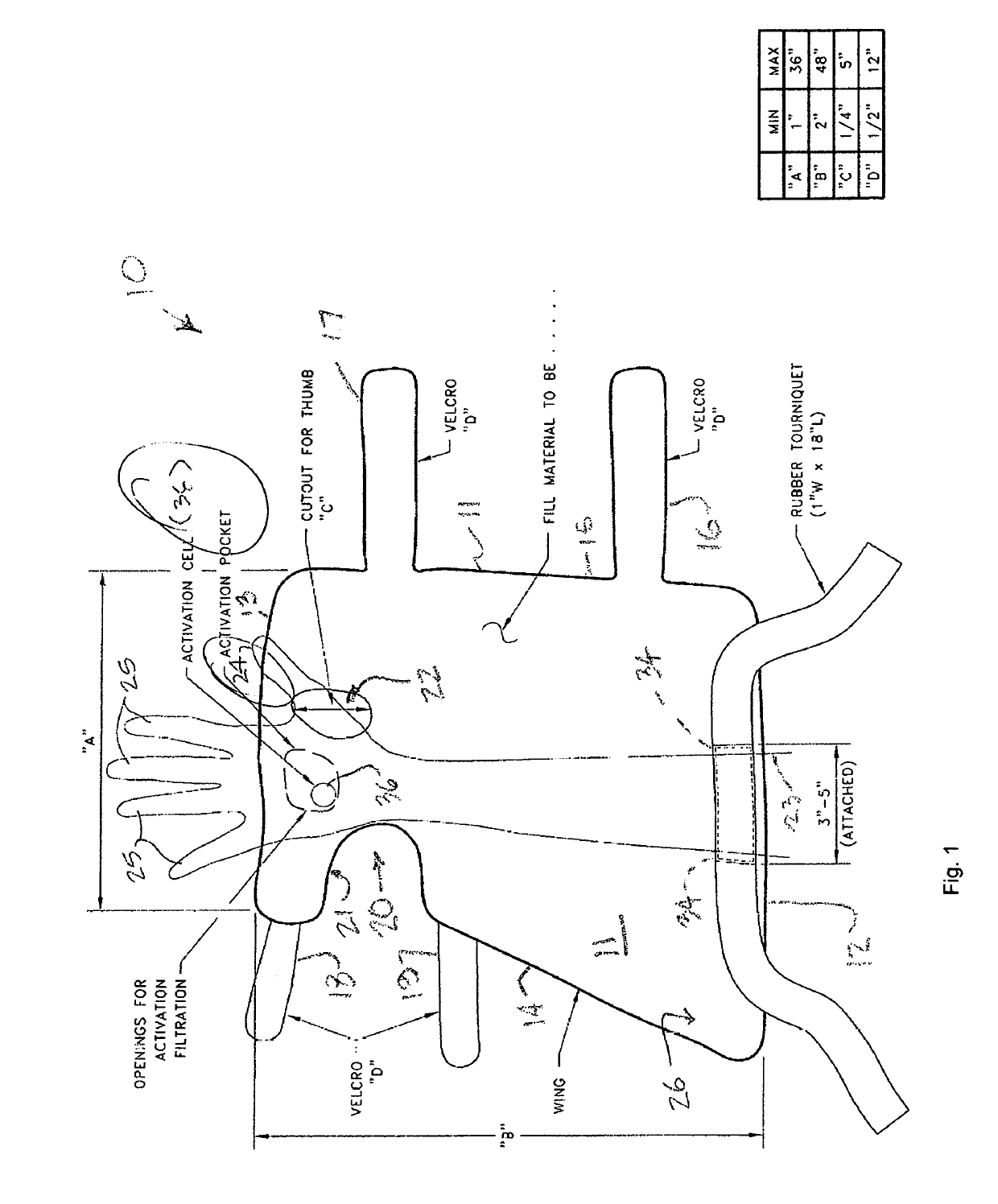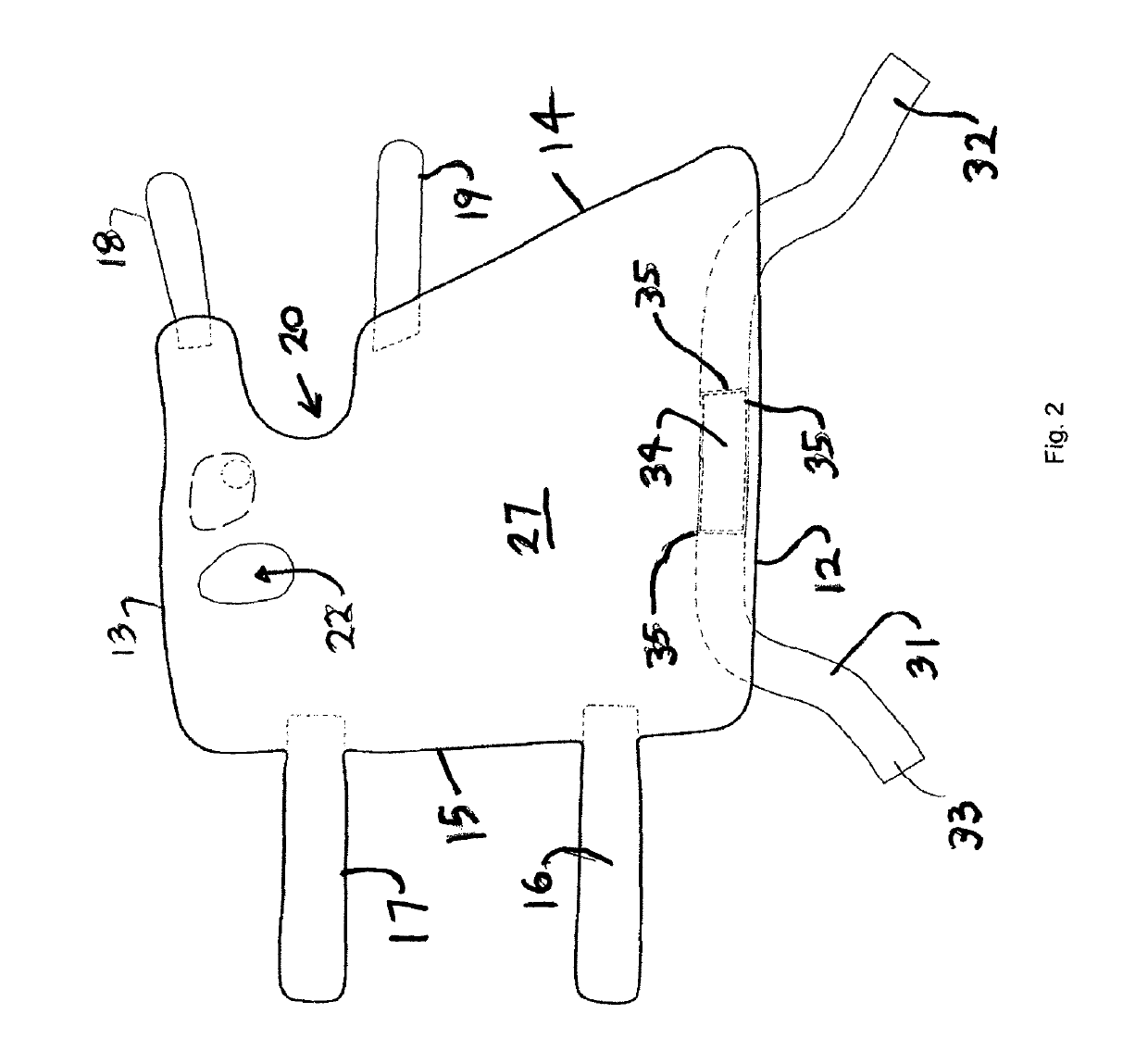Disposable tourniquet/sleeve warmer
a self-warming, ventilator technology, applied in the direction of tourniquets, other medical devices, therapeutic cooling, etc., can solve the problems of multiple blood draw attempts, difficult vasodilation preparation for venipuncture, and unfavorable patient chilling, so as to increase local blood pressure, induce vasodilation, and induce vasodilation
- Summary
- Abstract
- Description
- Claims
- Application Information
AI Technical Summary
Benefits of technology
Problems solved by technology
Method used
Image
Examples
Embodiment Construction
[0032]FIGS. 1-4 show the preferred embodiment of the form-fitting apparatus of the present invention designated generally by numeral 10. Apparatus 10 is used to warm a patient's skin and deeper tissues prior to an intravenous insertion of a needle from a patient's skin surface into the patient's vein. The apparatus includes a panel 11 having a proximal edge 12 and a distal edge 13. Side edges include first side edge 14 and second side edge 15. The edges 12, 13 can be generally parallel. The edges 14, 15 can be angled relative to one another to form an acute angle (see FIG. 1).
[0033]A plurality of straps are attached to the panel 11. These include straps 16, 17 attached to panel 11 at side edge 15 and straps 18, 19 attached to edge 14 as shown in FIG. 1. As shown in FIG. 1, dimension A is the width of the hand portion and dimension B is the overall length. The strap 16, 17 can be spaced farther apart than the spacing of straps 18 and 19. A recess 20 can be provided on edge 14 in betw...
PUM
 Login to View More
Login to View More Abstract
Description
Claims
Application Information
 Login to View More
Login to View More - R&D
- Intellectual Property
- Life Sciences
- Materials
- Tech Scout
- Unparalleled Data Quality
- Higher Quality Content
- 60% Fewer Hallucinations
Browse by: Latest US Patents, China's latest patents, Technical Efficacy Thesaurus, Application Domain, Technology Topic, Popular Technical Reports.
© 2025 PatSnap. All rights reserved.Legal|Privacy policy|Modern Slavery Act Transparency Statement|Sitemap|About US| Contact US: help@patsnap.com



